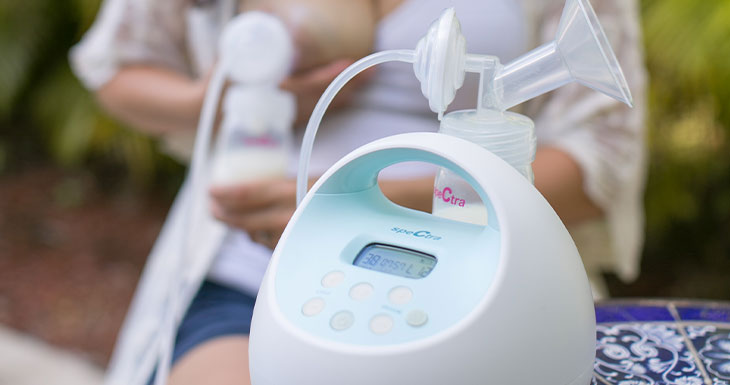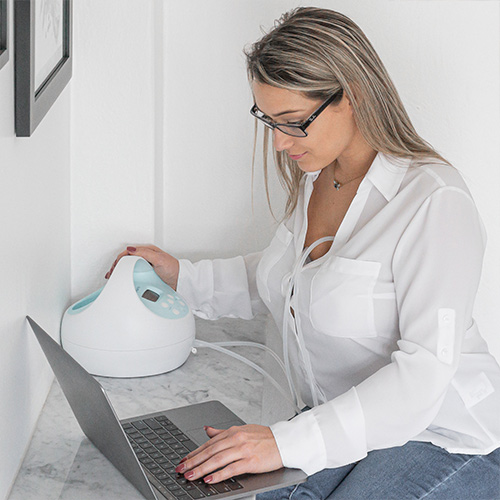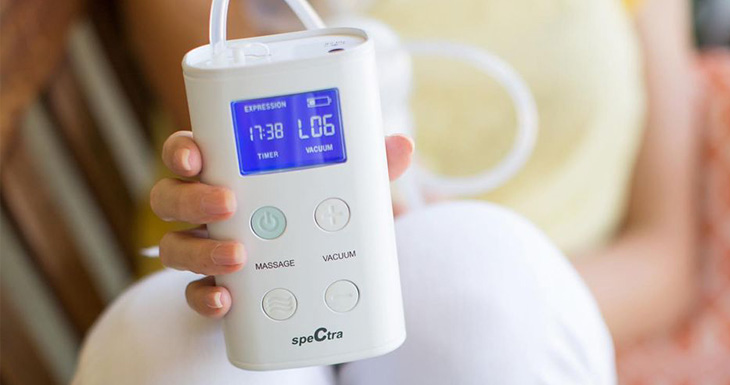Milk Supply: What’s Normal?
By Jacque Ordner BSN, RN, IBCLC, RLC
Moms want what is best for their babies and are often concerned they won’t make adequate milk throughout the breastfeeding process. Couple that concern with daily social media posts about huge freezer stashes and 10+ oz. pumping sessions and moms can get full on anxiety about whether their production is “normal”. Don’t worry mamas! We’re here to let you know what a full milk supply looks like and to hopefully calm your fears about just how much milk you’re likely going to need.
THE AVERAGE BREASTMILK INTAKE FOR A BABY FROM 1 MONTH TO 6 MONTHS IS 25oz. PER DAY. Research tells us that the range is from about 19oz to 30oz. per day. Milk production usually peaks at around 40 days postpartum as well. Medically speaking, a full milk supply ranges from 750ml –1035ml per day. It’s also normal for this amount to fluctuate from day to day. It’s normal to see pumping output fluctuate from session to session as well.
FOR MOMS WHO ARE PRIMARILY DIRECTLY NURSING THEIR INFANTS, TYPICAL PUMPING OUTPUT CAN RANGE FROM 0.5 oz to 2 oz. PER SESSION. We talk to so many moms whose babies have been growing and thriving while nursing at the breast, but then mom becomes concerned when her first pumping session only yields about an ounce from both breasts combined. We can literally hear the relief in their voices when we tell them that THIS IS NORMAL! Mamas, you don’t have to be pumping 5-10 oz per session to be successful at breastfeeding! The amount you can pump is not necessarily an indicator of the amount your body is making. Pumping is a learned skill that takes time to develop for many moms. Take cues from your baby….if they’re growing well and making adequate wet and dirty diapers, chances are you’re making the perfect amount of milk for them.
EXCLUSIVELY PUMPING MOMS TYPICALLY SEE A PUMPING OUTPUT OF 2oz. – 4oz. EVERY 2-3 HOURS. Pumping is a learned skill and can take some time to get used to. The above output range is for moms whose supply is established (after 40 days postpartum). Unfortunately, some moms have been told that exclusive pumping will not allow them to make a full milk supply. This is just not true, mamas! With a high-quality, hospital strength pump, a consistent pumping schedule, and well fitted flanges, moms can make a full milk supply (and more) with exclusive pumping.
While it’s true that most women can make a full milk supply, it’s also true that a small percentage cannot. If you suspect you have low milk supply or just need reassurance that things are going well, don’t hesitate to reach out to an IBCLC. Our Spectra Baby USA IBCLCs are here to help with free virtual consultations. Click HERE to schedule. We can also help via email at ibclc@spectrababyusa.com Happy pumping, mamas!
Sources:
Bonyata, K. (2018, January 02). Exclusive Pumping • KellyMom.com. Retrieved July 27, 2020, from https://kellymom.com/mother2mother/exclusive-pumping/
Bonyata, K. (2018, January 16). I’m not pumping enough milk. What can I do? • KellyMom.com. Retrieved July 27, 2020, from https://kellymom.com/hot-topics/pumping_decrease/
Lawrence, R. A., & Lawrence, R. M. (2016). Breastfeeding: A guide for the medical profession. Philadelphia, PA: Elsevier.
Mohrbacher, N. (2012, November 27). How Much Milk Should You Expect to Pump? Retrieved July 27, 2020, from http://www.nancymohrbacher.com/articles/2012/11/27/how-much-milk-should-you-expect-to-pump.html









